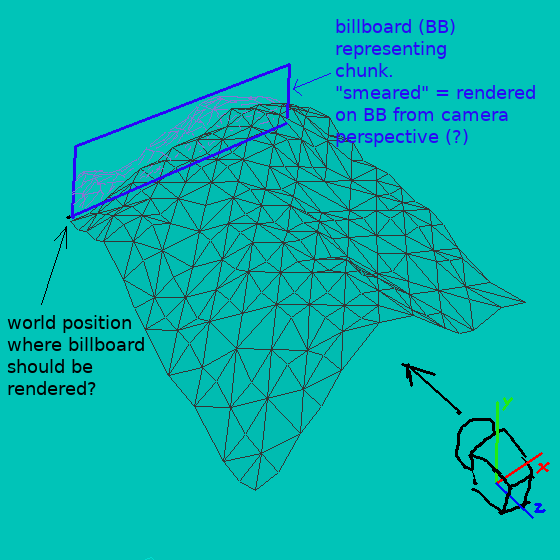I'm facing this problem for my Second Life / Open Simulator viewer. SL/OS is terrible with distance. The world just stops beyond the “draw distance”. Beyond that, the system draws procedural water. There's no sense of place in open terrain. You can't see distant mountains or buildings at all.
Since the world is divided into 256x256 meter “regions”, I want to make billboard impostors for each region. Probably the usual 8 views, plus straight down, rendered with an orthographic camera. Update them once a week or so. The effect won't be perfect, but with some blur and fog, it should be OK.
Something experimental I want to try is keeping the Z-depth info for each pixel of each impostor, and using that when loading it into the scene so impostors and 3D objects can coexist somewhat. Not sure how well that will work out.
Z-impostors were a thing around 20 years ago, but were not very successful. People were trying to use them at much closer range, like room size, and the illusion didn't hold up. I'll never use them closer than 100m or so, which should produce fewer artifacts.









